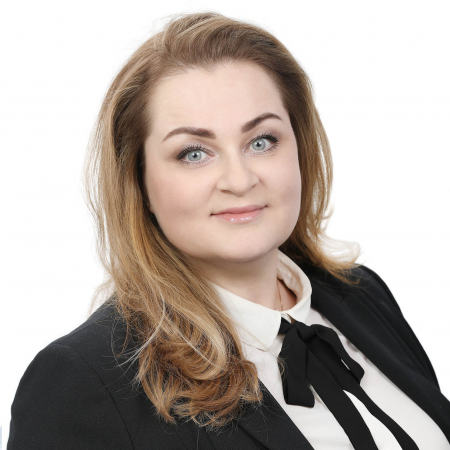Phlebectomy: removal of veins
One of the most common medical pathologies of our time is varicose veins of the lower extremities. Simultaneously, the lower extremity pathological veins are deformed, dilated, form knots, and convolutions due to violation of the mechanism of the prevention of reverse blood flow. Vein removal surgery is the only radical way to solve the disease's mature stages, especially in cases where there is a risk of possible development of dangerous complications.
What problems does vein removal surgery solve?
Nodular veins protruding from the legs (this pathology is more common in women) spoil the aesthetics of appearance and cause pain, discomfort, and many other unpleasant sensations. The legs become swollen, the skin becomes unhealthy earthy, and at night there are cramps.
Medications and compression stockings delay the progression of the disease and alleviate the negative symptoms, but only surgical operations to remove veins on the legs help to solve the problem dramatically. Surgery aims to achieve several results:
- restoration of physiologically normal blood flow;
- maintaining the functionality of healthy veins;
- elimination of affected vessels;
- elimination of inflammation.
Before the operation for varicose veins, an interview is conducted with a specialist, which includes a detailed collection of complaints and medical history and a comprehensive diagnosis, which includes a vascular examination and delivery of laboratory tests. The doctor must make an objective picture of the nature and extent of the disease to choose the optimal surgical tactics.
Types of operations on veins
The operation to remove veins is called phlebectomy - this is the general name of the technique used by vascular surgeons and phlebologists. Combined phlebectomy is performed in stages and includes the following stages and methods of operation:
- A ligation and section of the great saphenous vein in the area of its confluence with deep vessels (crossectomy), which involves an incision in the groin or small saphenous vein in the area of the popliteal fossa, depending on the location of the affected vessels. As a result of this manipulation the blood flow on pathologically changed vessels and the return blood flow (reflux) stops;
- Removal of the trunk of the great saphenous vein (and/or small saphenous vein) (stripping) - depending on the location and degree of vascular damage, use short or long stripping. In the first case, part of the trunk of the vessel is removed, in the second - the subcutaneous vein along its entire length. When using this technique, different types of tools and technologies are used, but the most common in the practice of phlebology was a narrow Babcock probe. This tool is equipped with a cutting device that cuts the affected area of the vein from the surrounding tissues and vessels. The least traumatic stripping techniques used to remove varicose veins are:
- invasive stripping (the vein is not cut, but twisted and removed into the wound);
- PIN-stripping - this technique uses one incision and puncture on the other side of the vessel, through which a vein is removed with a probe;
- cryostripping - freezing of a vessel, as a result of which the vein is glued to the instrument and pulled out. This efficient and gentle technique does not require additional puncture;
- ligation of perforating vessels - the most important stage of phlebectomy. To avoid cosmetic defects due to dissection of the muscular fascia, an endoscopic technique is used, in which the veins are bandaged through small incisions. This operation is performed by highly qualified surgeons;
- the last stage of combined phlebectomy - miniphlebectomy, or removal of single varicose branches. A modern method of treating varicose veins, the essence of which is to remove varicose veins through micro punctures (less than 2 mm). The technique of microphlebectomy is extremely complex and is perfectly mastered by specialists who have passed a highly specialized qualification. To perform this difficult manipulation, special tools (micro-hooks) are needed with the help of which it is possible to remove a "large" varicose vein through millimeter punctures (without a scalpel).
The main advantages of miniphlebectomy:
- no cuts and seams;
- the short duration of the procedure (up to 1 hour);
- radical method (varicose veins at the site of miniphlebectomy will never appear).
Other advanced techniques used for minor vascular damage include laser coagulation, radiofrequency ablation, steam treatment, and BIOGLUE treatment.
Laser coagulation - the effect on the vessel of a targeted laser beam. As a result of the impact of the pulse flare, the lumen of the vessel is glued (sclerosed), after which the vein is resorbed for some time. The technique is used in cases where varicose veins have retained a straight shape or in the presence of small branches. The operation is performed under ultrasound control.
radiofrequency ablation (RFA / EVRF / CLOSUREFAST or VNUS) is a method of removing varicose veins using the energy of radiofrequency waves. The method of radiowave ablation is based on the influence of high temperatures (microwaves), under the action of which the wall of the varicose vein is heated and eventually "sealed". After a few months, the vein is replaced by connective tissue and disappears.
Steam treatment - steam is fed into the lumen of the affected vessel, resulting in glueing of the walls, and the vein is excluded from the bloodstream. This technique is effective provided the nodal branches are removed.
Treatment of varicose veins with BIOGLUE (VenaBlock, VenaSeal) is an innovative method of non-thermal exposure to the vein wall, resulting in complete occlusion (glueing) of the patient's varicose vein. Cyanoacrylate bioglue is used - a solution that can glue the vein from the inside for several minutes and eliminate pathological venous reflux. The method of treatment of varicose veins using biological glue is evaluated as one of the priorities.
Recovery period
The use of modern techniques for the removal of varicose veins in Kyiv can greatly reduce the rehabilitation period and achieve a high cosmetic effect. During the recovery period, it is necessary to strictly follow the doctor's prescriptions to avoid possible complications.
The recovery program after removal of veins includes wearing compression underwear, diet, taking drugs to prevent blood clots and physical therapy. The Dobrobut Medical Center uses a comprehensive approach to solving health problems, so rehabilitation is given no less attention than surgery and drug therapy. Monitoring the condition of patients at all stages is an important component of the clinic.
Advantages of phlebectomy at Dobrobut Medical Center
Our medical center has everything you need for effective treatment of varicose veins by phlebectomy:
- advanced equipment, tools and consumables;
- modern diagnostic base;
- high level of organization of medical services (the ability to perform operations of varying complexity every day in the required number).
We have the most important thing that determines the success of the operation ─ a staff of experienced professionals who work with the latest generation of hardware. The cost of removing varicose veins depends on the complexity of the surgical technique used, the volume of the operation, the time spent in the hospital and the use of additional medical services.
To find out how much the treatment costs, according to the latest protocol - make an appointment with a phlebologist by phone or leave a request on the website, after which our consultants will call you and provide a detailed answer to all questions.


